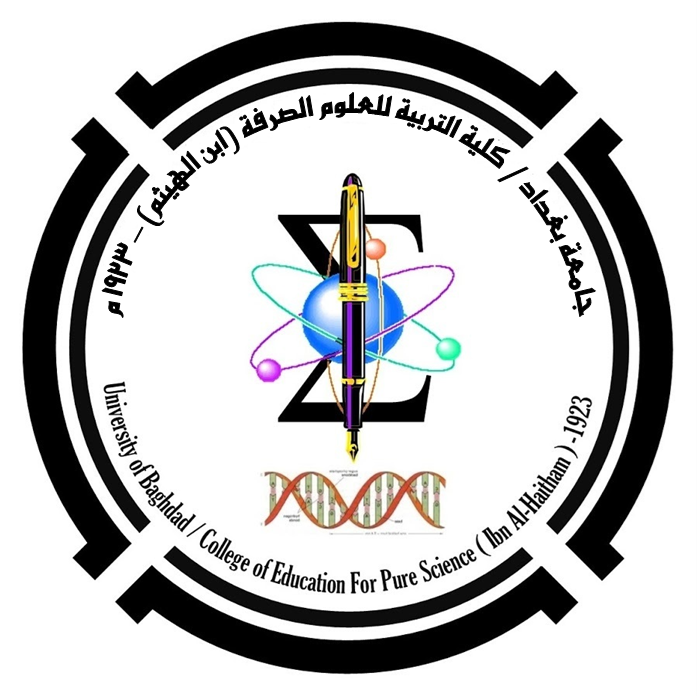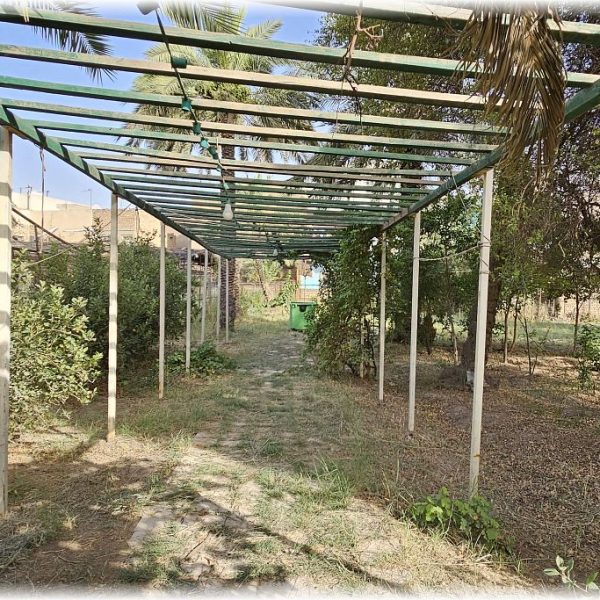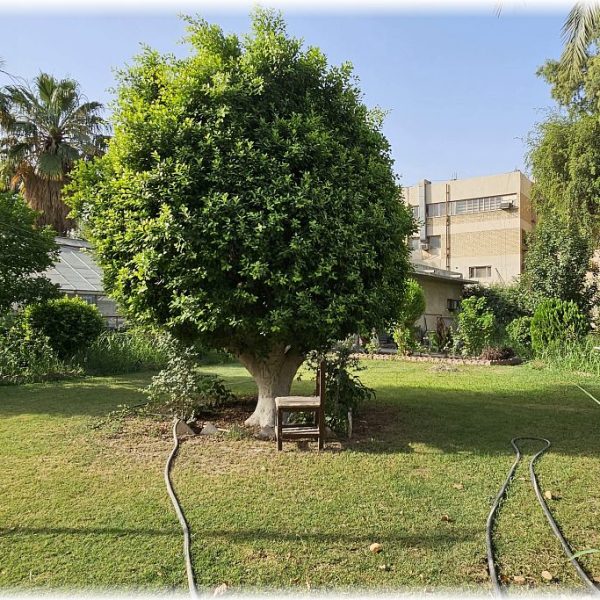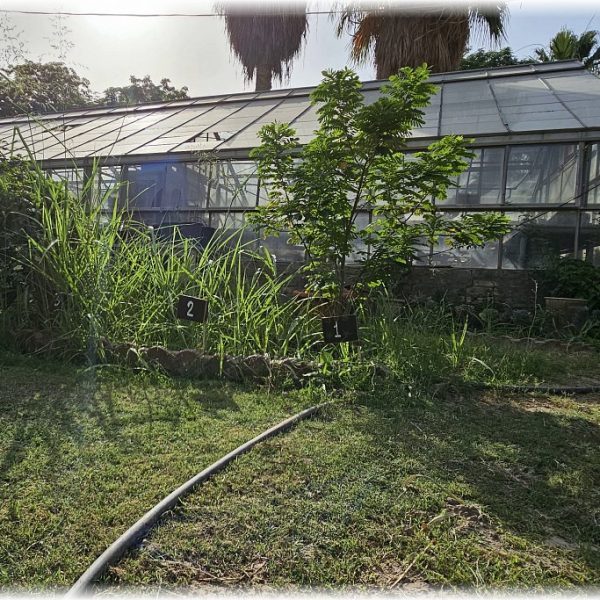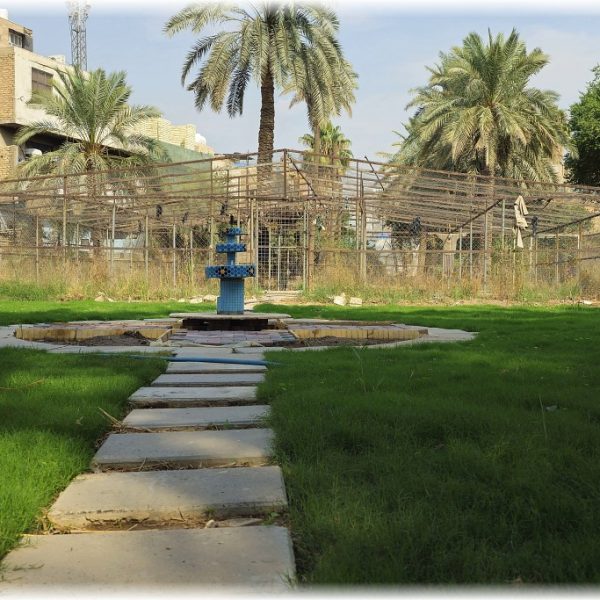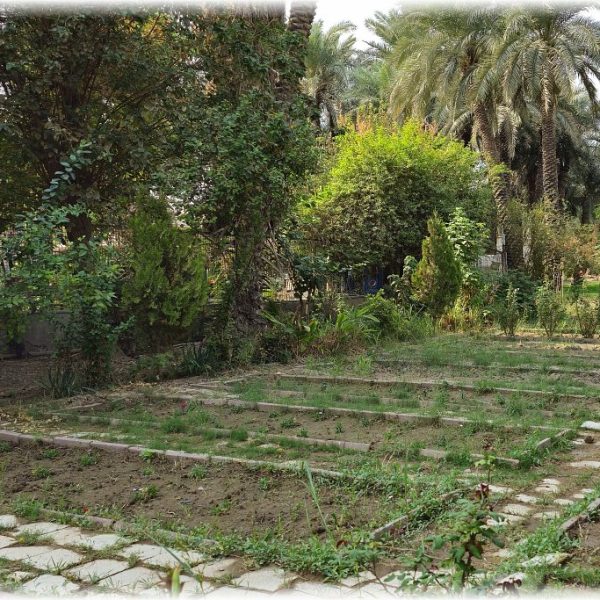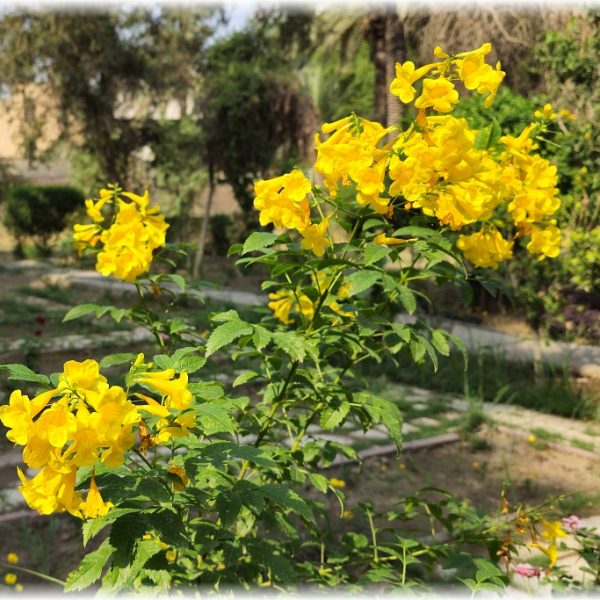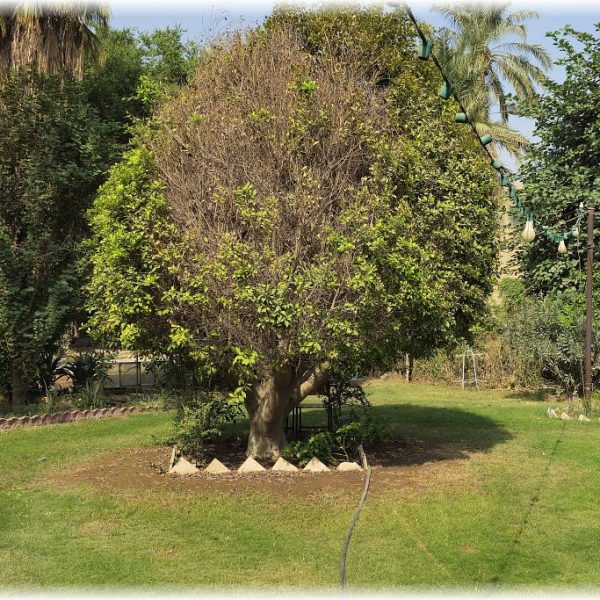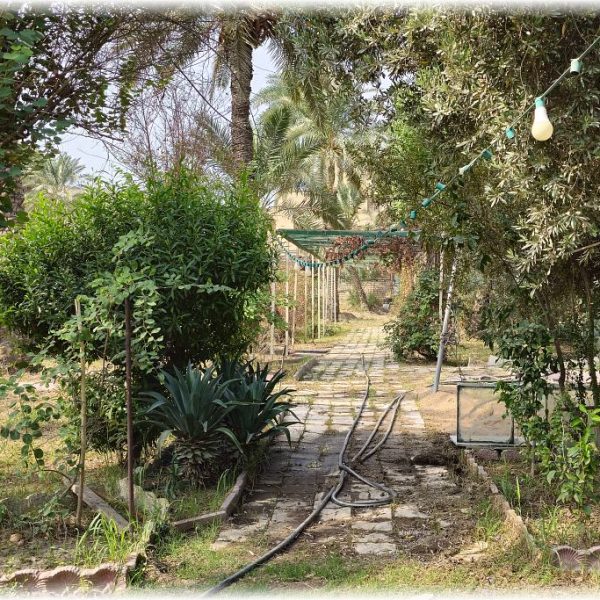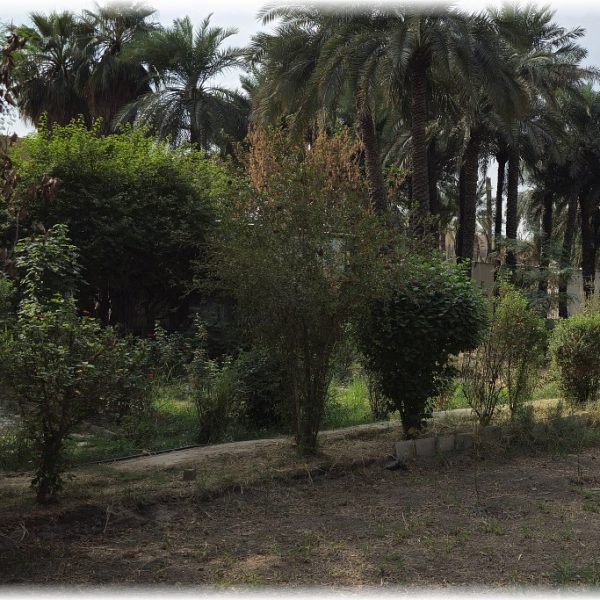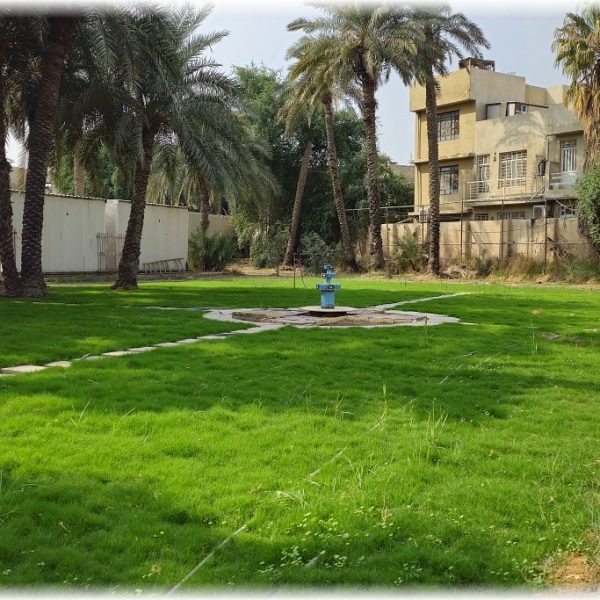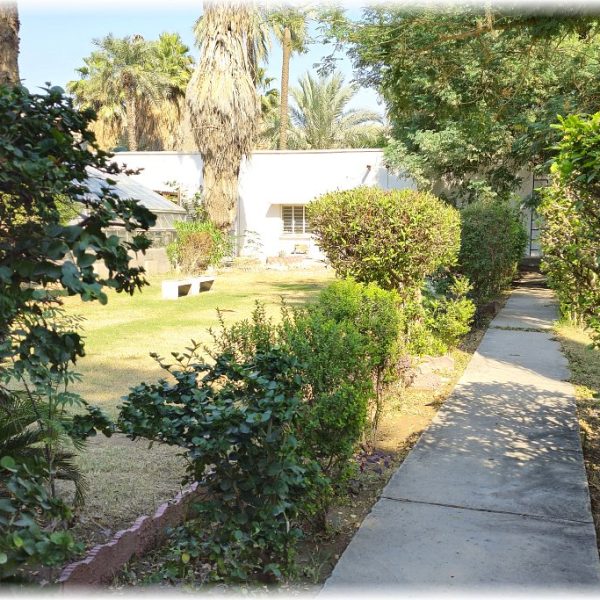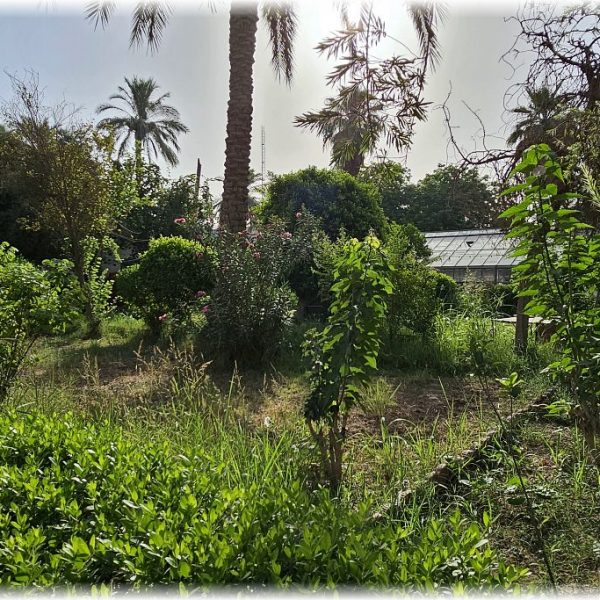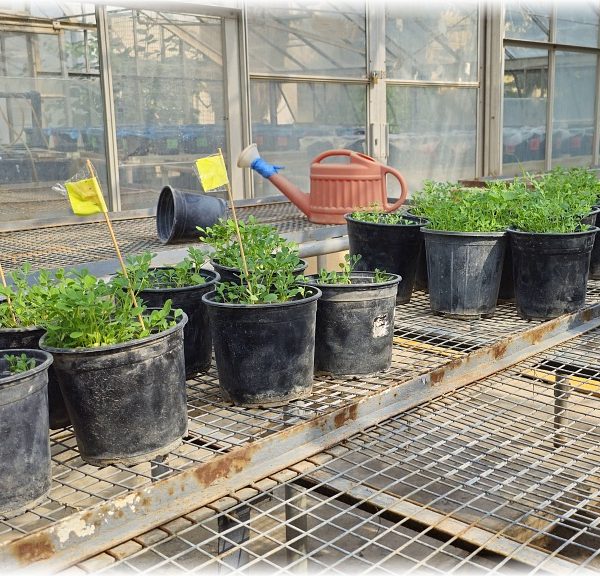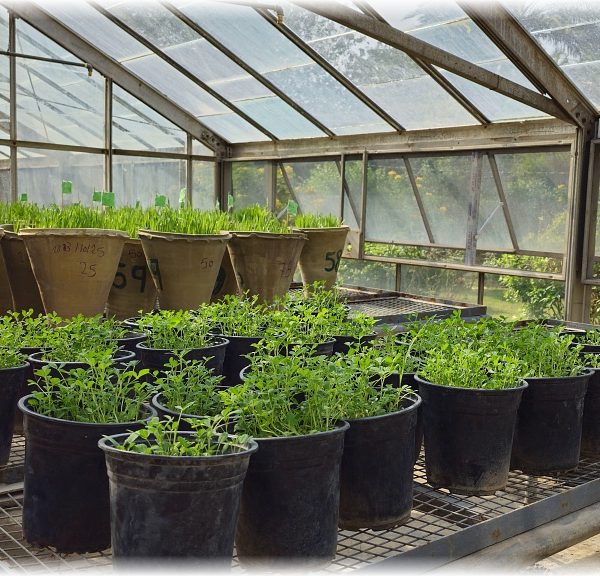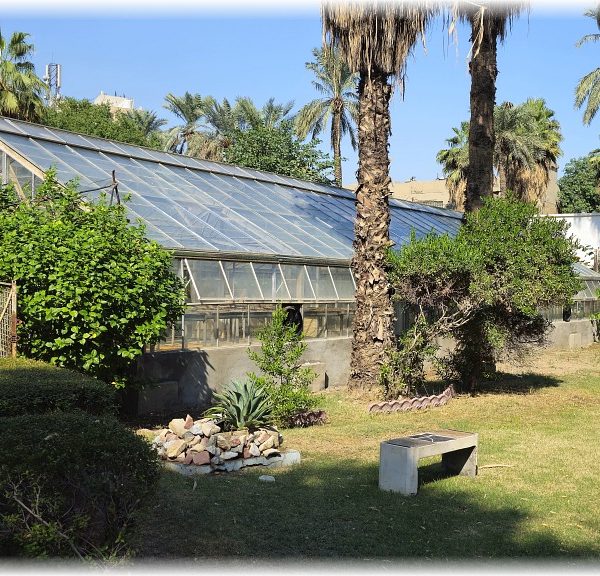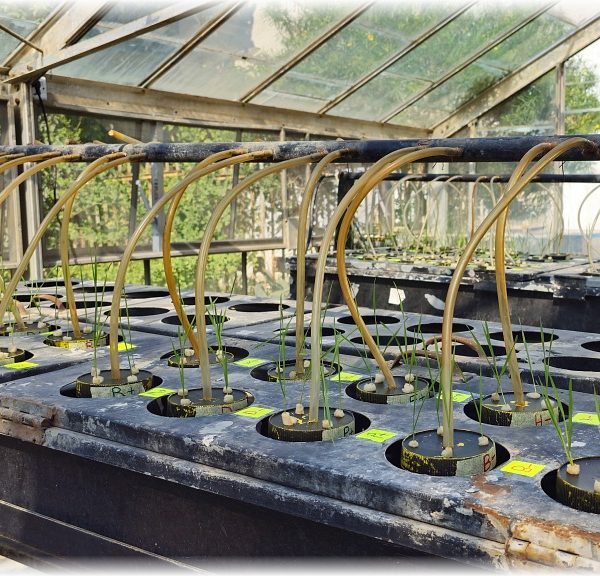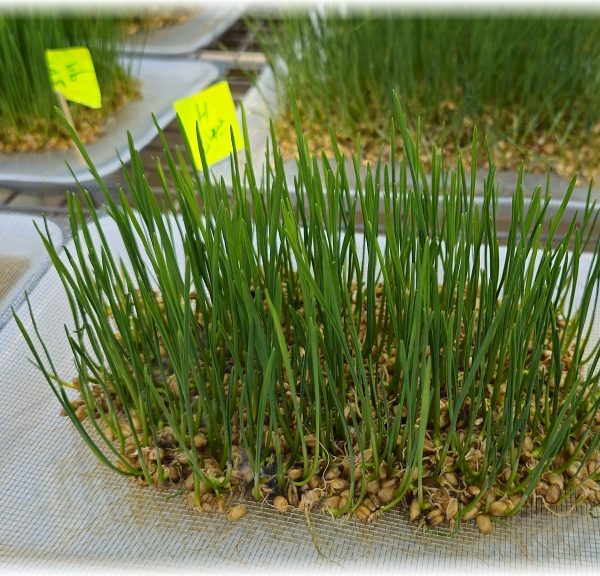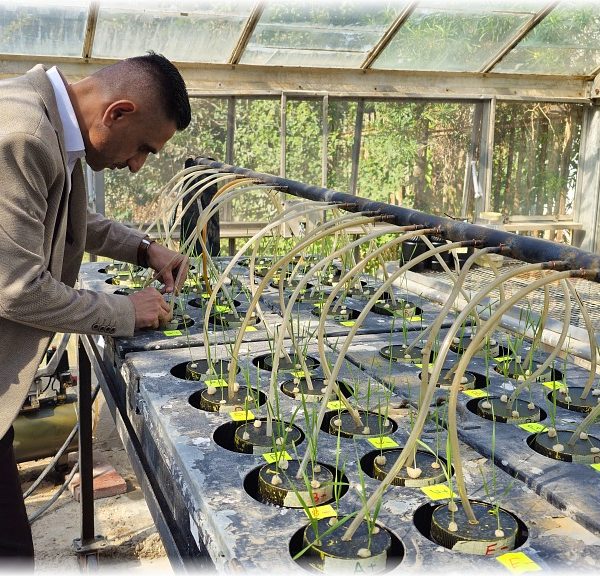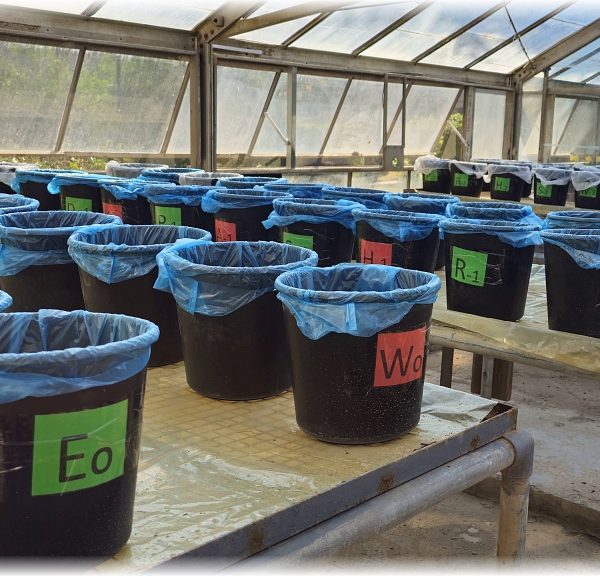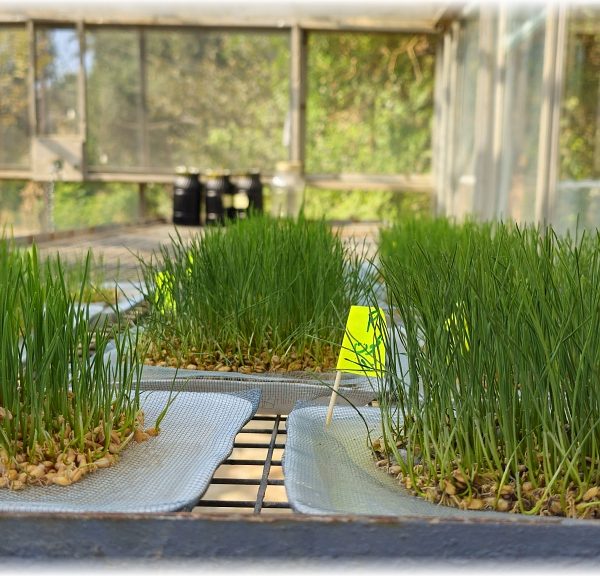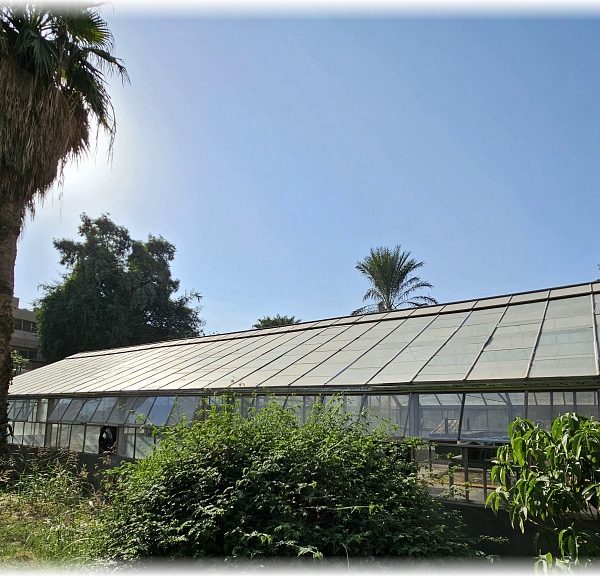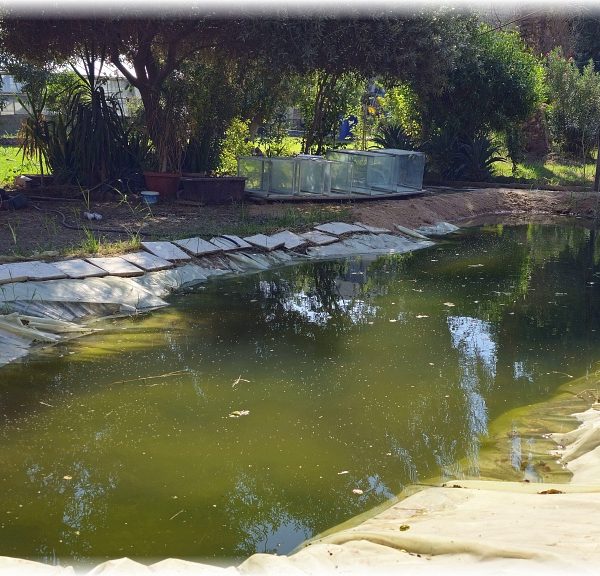Botanical Garden
It is not a botanical garden in the sense known to the general public, but rather an integrated scientific environmental unit and a vibrant natural environmental museum.
The Botanical Garden occupies a large area of the college’s land (about 2,500 square meters) located next to the Life Sciences Department. It is planted with some types of plants and trees included in the plant science and anatomy curricula specified for each academic stage and is used to conduct scientific experiments for department professors and graduate students in the field of botany. The botanical garden includes a group of laboratories that are used by graduate and undergraduate students and researchers, in addition to different areas planted with different types of plants. These types are selected to serve the environment and the entire educational process, by cultivating drought-resistant species, medicinal plants for the purposes of conducting research, and species that are taught in the curriculum. Plant classification for the second stage, in addition to the presence of many varieties of palm trees, citrus trees and pomegranates. The garden also includes fenced areas designated for agriculture used by postgraduate students, ponds for raising aquatic plants and algae, used for studying algae and archaea, as well as a special pond for raising frogs used in the animal physiology laboratory for preliminary study. The greenhouse located at the front of the botanical garden is used by students and researchers in agriculture and plant reproduction. The other important landmark in the garden is (the herbarium), which is a dedicated arbor that includes samples of dried and scientifically classified plants, including rare and important ones, which were collected by professors and graduate students. It is considered an important reference for visiting studies students from all governorates of Iraq. The green spaces attached to the research spaces are used. From the Botanical Garden to hold various annual festivals such as the Flower Festival, the Honey Festival, the Environment Festival, the Graduation Projects Festival, and others.
The botanical garden consists of the following parts:
– Advanced Mycology Laboratory.
– Advanced Plant Physiology Laboratory
– Advanced Immunology Laboratory
– Herbarium (contains samples of classified plants)
– It contains fields for conducting postgraduate experiments in the field of botany
It contains a greenhouse used to conduct scientific research.
The greenhouse contains a hydroponic farm used by graduate students.
– It contains an artificial pond for growing algae.
– It contains an artificial pond for growing frogs.
The garden contains date palm trees, some types of citrus fruits, such as grapes, apples, and marmots, some plants for studying taxonomy, and some seasonal flowers.

